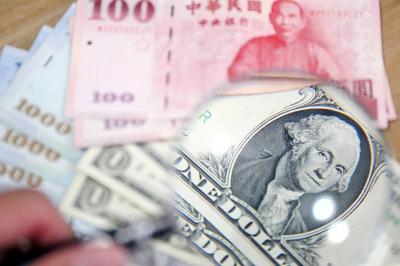OpenAI is discussing giving chief executive officer Sam Altman a 7 percent equity stake in the company and restructuring to become a for-profit business, people familiar with the matter said, a major shift that would mark the first time Altman is granted ownership in the artificial intelligence (AI) start-up.
The company is considering becoming a public benefit corporation, tasked with turning a profit and also helping society, said the people, who asked not to be identified because the information is private.
The transition is still under discussion and a timeline has not been determined, one of the people said. In a statement, a spokesperson said OpenAI remains “focused on building AI that benefits everyone,” adding, “the nonprofit is core to our mission and will continue to exist.”

Photo: Barbara Ortutay, AP
OpenAI is mulling these changes against the backdrop of an exodus of senior managers. Chief technology officer Mira Murati said on Wednesday she is leaving, a surprise move that marks the latest high-profile departure from the start-up. In the months after it suddenly fired and then rehired Altman last year, OpenAI has been in a state of flux — losing multiple managers and shifting the structure of some of its teams.
In a statement on X, Murati said she was “stepping away because I want to create the time and space to do my own exploration.”
In the post, she wrote, “For now, my primary focus is doing everything in my power to ensure a smooth transition, maintaining the momentum we’ve built.”
In response, Altman expressed “tremendous gratitude” for Murati’s contributions, writing, “It’s hard to overstate how much Mira has meant to OpenAI, our mission, and to us all personally.” He also said that he would share more with employees about transition plans soon.
Many employees were shocked by the announcement of Murati’s departure. On the company’s internal Slack channel, multiple OpenAI employees responded to the news with a “WTF” emoji, according to a person familiar with the matter.
Murati, an Albanian-born Dartmouth-educated engineer, played a key role in shepherding major product releases, including OpenAI’s popular ChatGPT chatbot, its DALL-E image generation software, and its recently released advanced voice mode that lets users talk to ChatGPT in essentially real time.
After Altman’s ouster, Murati gained a higher profile when she was appointed as interim CEO — but she quickly joined a group of executives pushing for Altman to be reinstated.
Her departure marks the latest executive exit at OpenAI since Altman’s firing and rehiring last year. Ilya Sutskever, the company’s chief scientist, left in May. Last month, co-founder Greg Brockman said he would go on leave until the end of the year and researcher John Schulman left for AI rival Anthropic. The departures leave only two members of OpenAI’s original founding team at the start-up: Altman and Wojciech Zaremba.
The company currently has about 1,700 employees, more than double the roughly 770 it had in late last year.
Altman subsequently announced additional changes to OpenAI’s management. In a memo to OpenAI he also posted to X on Wednesday, he wrote that chief research officer Bob McGrew is leaving, along with Barret Zoph, a vice president of research who worked on products like ChatGPT.
In his own post on X, Zoph said it was a “very difficult decision” to leave and he plans to “explore new opportunities” outside the company.
“OpenAI is doing and will continue to do incredible work and I am very optimistic about the future trajectory of the company and will be rooting everybody on,” he wrote.
Altman also named six existing employees who will now report directly to him, some in new roles, including Matt Knight as chief information security officer.
“I have over the past year or so spent most of my time on the non-technical parts of our organization; I am now looking forward to spending most of my time on the technical and product parts of the company,” the CEO wrote, adding that there will be an all-hands meeting Thursday to answer employee questions.
“Leadership changes are a natural part of companies, especially companies that grow so quickly and are so demanding,” Altman wrote. “I obviously won’t pretend it’s natural for this one to be so abrupt, but we are not a normal company.”

The US dollar was trading at NT$29.7 at 10am today on the Taipei Foreign Exchange, as the New Taiwan dollar gained NT$1.364 from the previous close last week. The NT dollar continued to rise today, after surging 3.07 percent on Friday. After opening at NT$30.91, the NT dollar gained more than NT$1 in just 15 minutes, briefly passing the NT$30 mark. Before the US Department of the Treasury's semi-annual currency report came out, expectations that the NT dollar would keep rising were already building. The NT dollar on Friday closed at NT$31.064, up by NT$0.953 — a 3.07 percent single-day gain. Today,

‘SHORT TERM’: The local currency would likely remain strong in the near term, driven by anticipated US trade pressure, capital inflows and expectations of a US Fed rate cut The US dollar is expected to fall below NT$30 in the near term, as traders anticipate increased pressure from Washington for Taiwan to allow the New Taiwan dollar to appreciate, Cathay United Bank (國泰世華銀行) chief economist Lin Chi-chao (林啟超) said. Following a sharp drop in the greenback against the NT dollar on Friday, Lin told the Central News Agency that the local currency is likely to remain strong in the short term, driven in part by market psychology surrounding anticipated US policy pressure. On Friday, the US dollar fell NT$0.953, or 3.07 percent, closing at NT$31.064 — its lowest level since Jan.

The New Taiwan dollar and Taiwanese stocks surged on signs that trade tensions between the world’s top two economies might start easing and as US tech earnings boosted the outlook of the nation’s semiconductor exports. The NT dollar strengthened as much as 3.8 percent versus the US dollar to 30.815, the biggest intraday gain since January 2011, closing at NT$31.064. The benchmark TAIEX jumped 2.73 percent to outperform the region’s equity gauges. Outlook for global trade improved after China said it is assessing possible trade talks with the US, providing a boost for the nation’s currency and shares. As the NT dollar

The Financial Supervisory Commission (FSC) yesterday met with some of the nation’s largest insurance companies as a skyrocketing New Taiwan dollar piles pressure on their hundreds of billions of dollars in US bond investments. The commission has asked some life insurance firms, among the biggest Asian holders of US debt, to discuss how the rapidly strengthening NT dollar has impacted their operations, people familiar with the matter said. The meeting took place as the NT dollar jumped as much as 5 percent yesterday, its biggest intraday gain in more than three decades. The local currency surged as exporters rushed to